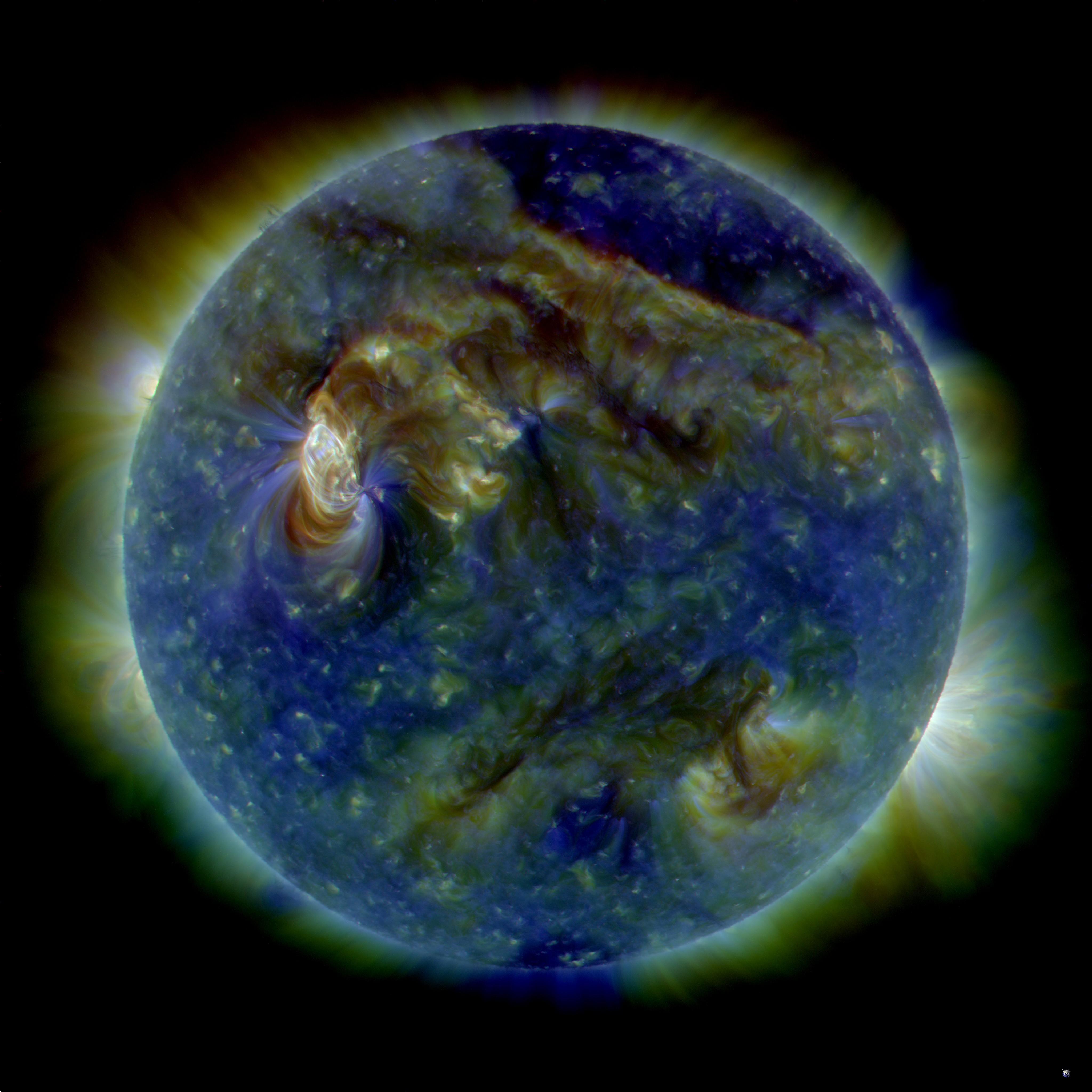Wednesday, September 2, 2015
The Carrington Event
One of my favorite science fiction scenarios is the production of an EMP (electromagnetic pulse) that wipes out our digital technologies and transforms society as we know it. I first learned about this phenomenon many moons back in connection with the Carrington Event which occurred on this day 156 years ago and caused all manner of discombobulation around the globe. I was reminded of it this morning through Spaceweather, which celebrated the anniversary by pointing out that we had only just escaped an equally devastating CME (coronal mass ejection) in July of 2012. The eruption was massive--apparently as strong as the 1859 event, but missed us. What it did, however, was remind us (according to the Spaceweather article) "that extreme space weather is not a thing of the past."
Richard Carrington was by all accounts a wizbang astronomer, and on that fateful day was busy drawing the sunspots he was observing in his private lab. As he watched, the spots coalesced and disappeared--but only after erupting into "a white-light solar flare--a magnetic explosion on the sun." (NASA Science News)
The NASA article also describes the aftermath:
Just before dawn the next day, skies all over planet Earth erupted in red, green, and purple auroras so brilliant that newspapers could be read as easily as in daylight. Indeed, stunning auroras pulsated even at near tropical latitudes over Cuba, the Bahamas, Jamaica, El Salvador, and Hawaii.
Even more disconcerting, telegraph systems worldwide went haywire. Spark discharges shocked telegraph operators and set the telegraph paper on fire. Even when telegraphers disconnected the batteries powering the lines, aurora-induced electric currents in the wires still allowed messages to be transmitted.
The article goes on to reassure us that flares of this magnitude seem to be rare, but also notes that our current electronic technologies are all at risk--as are our satellites and astronauts (if they're doing EVA when it occurs). This is where the science fiction fodder comes in, because although world-wide space agencies are busy studying flares, Spaceweather notes that a Carrington-grade flare could effect damage on the order of a trillion dollars worth "and require four to ten years for complete recovery." I should note here that CMEs and solar flares aren't the same thing, but often occur together (Christensen). The July 2012 event, in fact, began with a flare that was followed by a CME (Anthony).
Nor, as I've only recently discovered, are EMPs and CMEs the same thing. EMPs can be manufactured, and the effects of a CME are in some ways like those of an EMP, but there seems to be a great deal of controversy on the interwebs about which would cause what.
What this teaches me is that if I want to use these kinds of events as a backdrop to a story (as I actually already have, but the story isn't about the science; it's about the people and what they do to survive, which could happen in any number of scenarios), I need to bone up on both.
At any rate, there seem to be a number of books/movies/stories already out there, which gives me more stuff to read (if any of it's any good; one promising book is by Roger Zelazy and Thomas T. Thomas, Flare, from 1992). And of course there are all those Prepper websites that I've already run across in my real estate porn forays into Land For Sale In Montana.
Anyway, happy Carrington Day. And remember to sign up for Spaceweather (especially if you live in Montana and points north; they notify folks about auroras). Also, read the cited articles, both with more information and quite interesting.
Sources:
Anthony, Sebastian. "The Solar Storm of 2012 That Almost Sent Us Back to a Post-apocalyptic Stone Age." 24 July 2014. ExtremeTech. Ziff Davis, L.L.C. Web. 02 Sept. 2015.
"August 2010 CME SDO Multi-Wavelength." Multiple contributors. Wikimedia Commons. (There are multiple CME images in the Commons, but this was the prettiest.
Christensen, Bill. "Shock to the (Solar) System: Coronal Mass Ejection Tracked to Saturn." 05 Nov. 2004. Space.com. Purch. Web. 2 Sept. 2015.
Labels:
astronomy,
Carrington Event,
CME,
EMP,
science fiction,
space,
technology,
the future
Subscribe to:
Comments (Atom)

